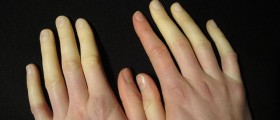
Xanthomas are skin growths which consist of fat. Apart from affecting the skin, these yellowish cholesterol-rich growths also deposit in tendons and may affect other parts of the body. The condition is closely related to hyperlipidemias (both primary and secondary hyperlipidemias).
What Causes Xanthomas?
This condition predominantly affects older individuals and is generally a consequence of excess of blood lipids. So people suffering from hypercholesterolemia or hypertriglyceridemia may easily develop xanthomas. This depends on the type of hyperlipidemia and not all patients with increased lipids in the blood will eventually develop these unsightly skin growths.
Xanthomas basically vary in size and there may be more than one present. They may reach 3 inches in size or even grow bigger. Even though xanthomas may affect various parts of the body, they predominantly form on the palpebrae, elbows, buttocks, knees, hands and feet.
In many cases development of xanthomas is closely related to medical conditions which cause increase in blood lipids. This is why they affect people suffering from certain cancers, diabetic patients, people suffering from metabolic disorders (e.g. familiar hypercholesterolemia), primary biliary cirrhosis etc.
Clinical Characteristics of Xanthomas
Xanthomas develop in a form of yellow and painless lumps below the surface of the skin. They may sometimes be sore and tender to touch. Xanthomas are in most cases flat and feel rather soft under the fingers. These growths have sharp and distinctive edges which make them completely separated form the nearby tissues.
Diagnosing Xanthomas
Diagnosis of xanthoma can be easily set by simple inspection of the lump. Still, the doctor will also perform additional tests and exams. Increase in lipids in the blood may be helpful. However, definitive confirmation is only possible after excision of the growth and pathohistological examination. Such exam confirms the presence of a fatty deposit.
Treatment and Prevention of Xanthomas
People susceptible to xanthomas are supposed to maintain optimal level of lipids in the blood and this way prevent further formation of fat deposits. This also refers to all the conditions associated with xanthomas. Namely, if they are brought under control, the level of lipids remains within limited range and xanthomas will not develop. Unfortunately, once these growths develop they can only be surgically removed. Even surgery is not a permanent solution for xanthomas because they may reoccur.
The only complication associated with xanthomas is an aesthetic problem they cause, especially if they are located on the face. There is no need for one to worry since these growths are non-cancerous and they never turn into malignant tumors.

















Your thoughts on this
Loading...